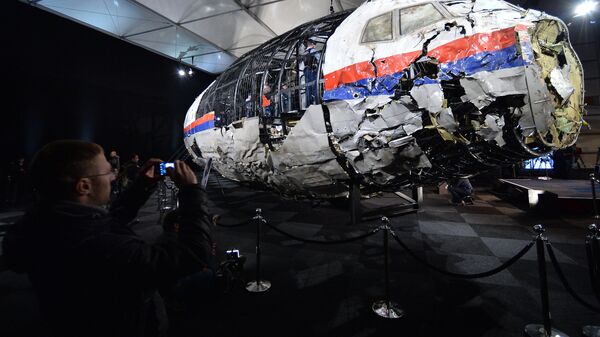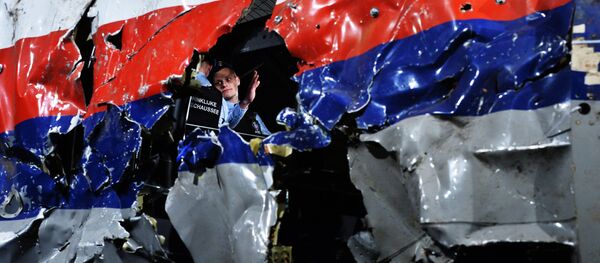According to the deputy prosecutor general, Russia gave the Netherlands the data from Russian radars as well as files proving that the missile that hit Boeing belonged to Ukraine.
"It was fully proven that the missile whose debris was shown by the JIT belonged to Ukraine. However, we see again that, like in the case with Russia’s primary radar data, the JIT continues to just keep silent and not respond to this information, despite the fact that four months have already passed. None of the JIT members has expressed a desire to come and study the documents. I stress that the JIT has shown no interest in these documents", Vinnichenko said.
READ MORE: MH17 Downing: Russia Ready to Conduct Extra Papers Analysis on Case
Speaking further, the official noted that there was no evidence of any Russian nationals being involved in the crash, adding that there were also no grounds to question any of them.
"Yes, we have seen surnames of various Russian citizens being circulated in the media and the Internet in connection to the MH17 crash. We also have seen the so-called suspects and some journalists deny this information themselves. What matters is that, to date, no real evidence of any Russian citizen’s involvement in the Boeing tragedy has been provided. Therefore, there are no grounds for questioning any of our citizens as part of this case", he stated.
Vinnichenko also urged the JIT to explain why data from Ukrainian radars and US satellites concerning the 2014 crash has not been published.
"These are its direct responsibilities. It is beyond Russia’s competence. But the question is fair, and it should be addressed to the Netherlands. Where is the data of Ukraine and the United States? If there isn’t any, why has it not been requested? If there is, why has it not been made public?" the Deputy Prosecutor General said.
The JIT later claimed that the aircraft was downed by a missile that came from the 53rd Anti-aircraft Missile Brigade of the Russian Armed Forces.
Reacting to this, the Russian Defence Ministry in September presented declassified files on the Buk missile, showing that it was made at Russia's Dolgoprudny Plant in 1986, delivered to a military unit in Ukraine and remained in the country after the Soviet Union collapsed in 1991.



